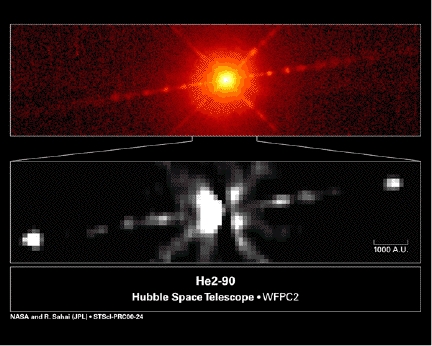"I have used the Hubble quite extensively to look at many dying stars and we've seen many mysterious and beautiful shapes and structures, but we've never seen such a jet-like structure."
- Raghvendra Sahai, Ph.D., Astrophysicist, Jet Propulsion Lab

September 6, 2000 Pasadena, California - At the Jet Propulsion Laboratory in Pasadena, astrophysicists are puzzled by a bright object about 8,000 light years from earth in the constellation Centaurus. It is giving off large jet pulses that are more typical of star births. But there is also an accretion disk of gas and dust often associated with a dying star. The paradox of birth and death characteristics is forcing a re-evaluation of what has been considered a planetary nebula since the 1990s.
Click here to subscribe and get instant access to read this report.
Click here to check your existing subscription status.
Existing members, login below:
© 1998 - 2025 by Linda Moulton Howe.
All Rights Reserved.

